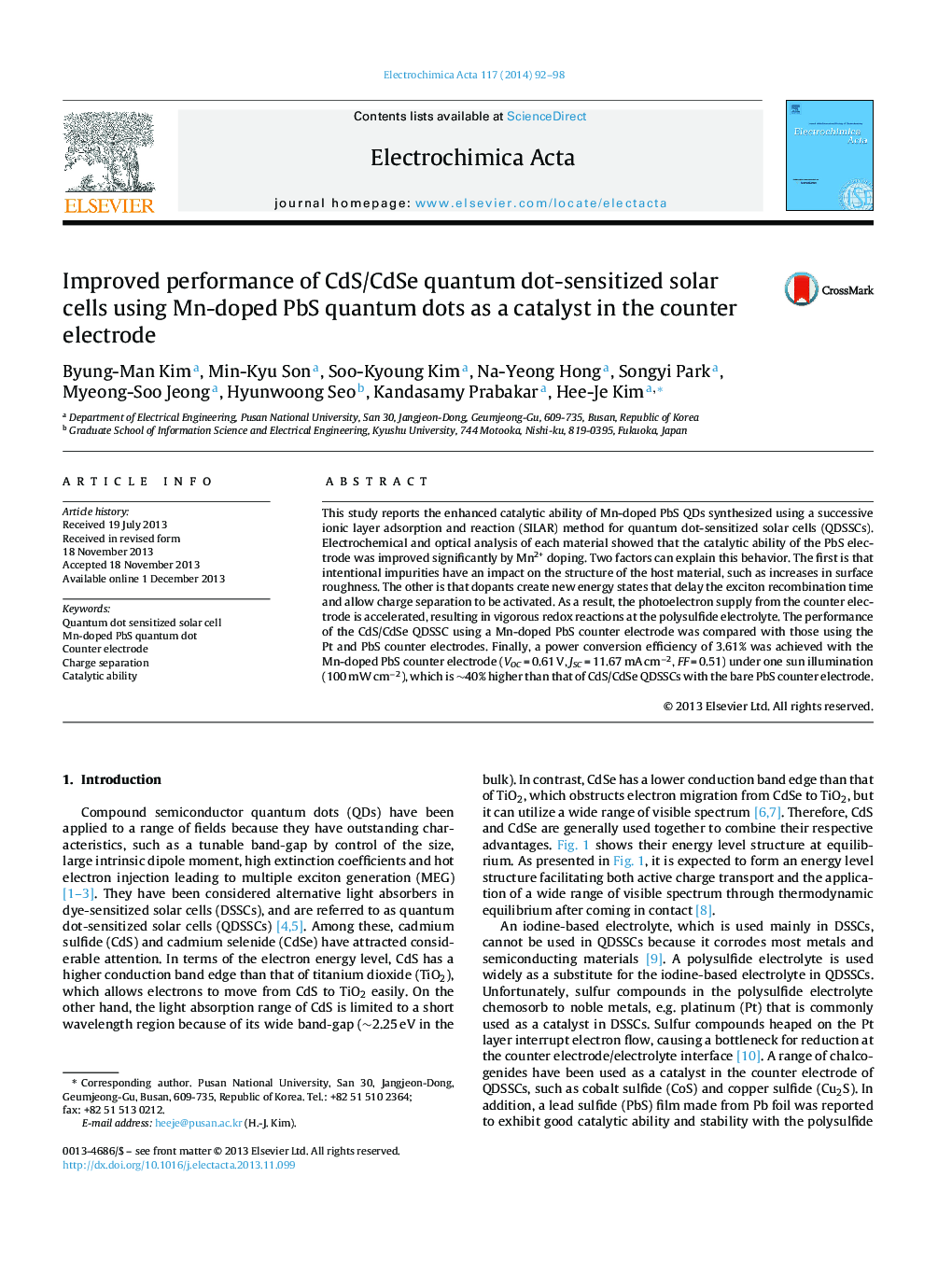| Article ID | Journal | Published Year | Pages | File Type |
|---|---|---|---|---|
| 186701 | Electrochimica Acta | 2014 | 7 Pages |
•PbS QDs synthesized using the SILAR method act not only as the electrochemical catalysts but as donors providing additional electrons under illumination.•The electrochemical and optical properties of the PbS QDs were enhanced considerably after Mn2+ doping.•The electron supply from the counter electrode was significantly activated by Mn2+ doping, improving the performance of QDSSC.
This study reports the enhanced catalytic ability of Mn-doped PbS QDs synthesized using a successive ionic layer adsorption and reaction (SILAR) method for quantum dot-sensitized solar cells (QDSSCs). Electrochemical and optical analysis of each material showed that the catalytic ability of the PbS electrode was improved significantly by Mn2+ doping. Two factors can explain this behavior. The first is that intentional impurities have an impact on the structure of the host material, such as increases in surface roughness. The other is that dopants create new energy states that delay the exciton recombination time and allow charge separation to be activated. As a result, the photoelectron supply from the counter electrode is accelerated, resulting in vigorous redox reactions at the polysulfide electrolyte. The performance of the CdS/CdSe QDSSC using a Mn-doped PbS counter electrode was compared with those using the Pt and PbS counter electrodes. Finally, a power conversion efficiency of 3.61% was achieved with the Mn-doped PbS counter electrode (VOC = 0.61 V, JSC = 11.67 mA cm−2, FF = 0.51) under one sun illumination (100 mW cm−2), which is ∼40% higher than that of CdS/CdSe QDSSCs with the bare PbS counter electrode.
